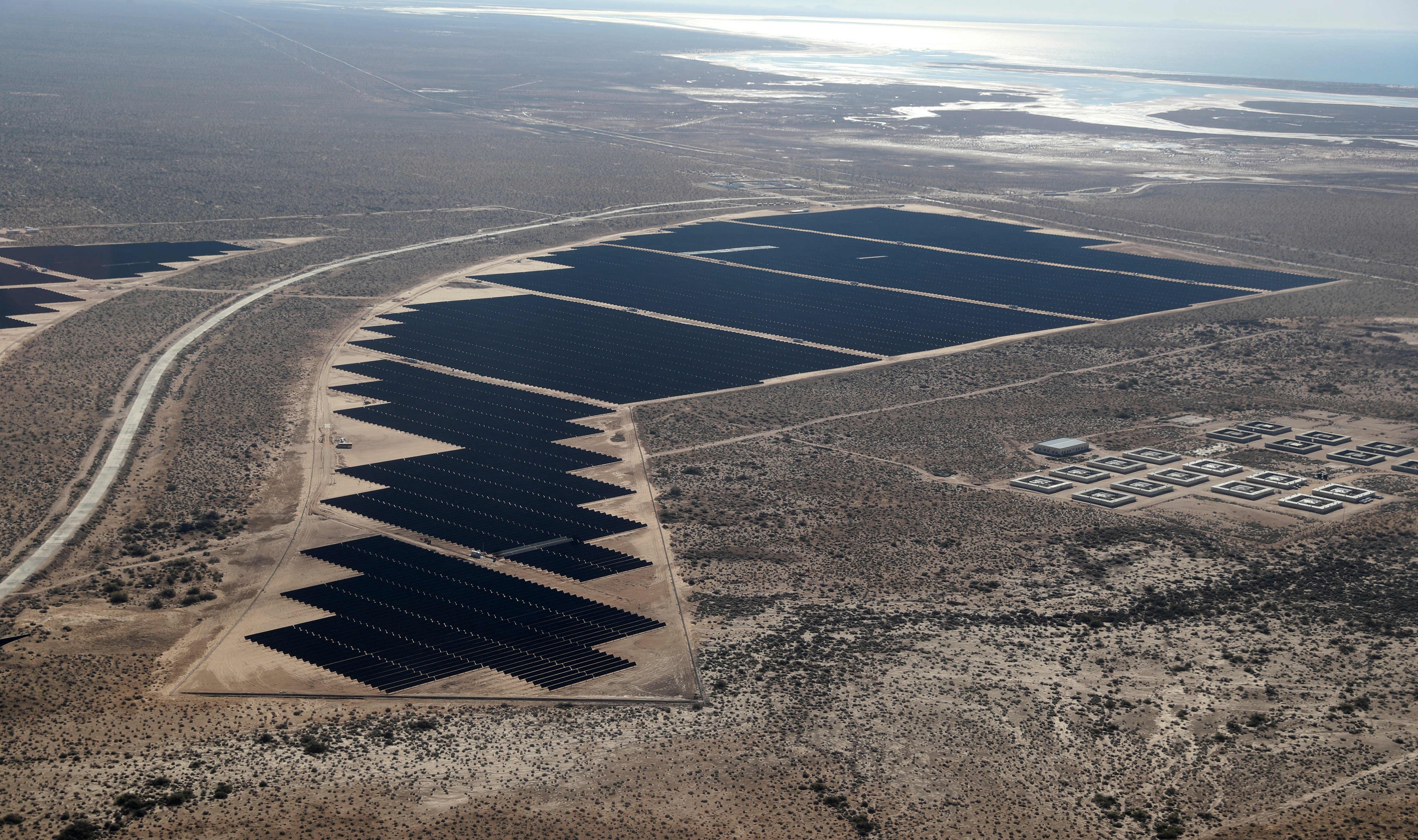Sustainable solutions are crucial to harnessing the potential of renewable energy for a better future. This article discusses the importance of renewable energy, the challenges faced in its implementation, and potential solutions to overcome them.
Renewable energy has emerged as a vital component of sustainable development in recent times. With an increase in global warming and climate change, renewable energy sources such as solar, wind, hydro, and geothermal can play a significant role in reducing carbon emissions and meeting the energy demands of the growing population.
However, the integration of renewable energy into existing systems is not without challenges. Issues like intermittency, storage, and infrastructure pose significant challenges to the adoption of renewable energy sources. To ensure that we harness the potential of renewable energy sustainably, there is a need for policies that promote renewable energy deployment, reduce policy uncertainties, provide adequate financing, and support research and development. In this article, we explore various methods that could help overcome these challenges, leading to a brighter, more sustainable future.

Credit: www.reuters.com
Benefits Of Renewable Energy
Sustainable Solutions: Harnessing The Potential Of Renewable Energy
With looming climate crisis and depleting fossil fuel reserves, it is crucial to harness the potential of renewable energy. Transitioning to sustainable processes brings forth a multitude of benefits for the environment, economy, and society. This section would delve into the benefits of renewable energy and its role in achieving sustainability.
Environmental Benefits
Renewable energy sources have great environmental benefits, with a minimal impact on nature.
- Renewable energy sources are non-polluting, and emit negligible greenhouse gases, contributing towards clean air and reducing the carbon footprint.
- Wind power, one of the renewable energy sources, can generate eco-friendly energy without the mining and drilling involved in fossil fuels. This helps prevent habitat and biodiversity loss, deforestation, and ecosystem degradation.
Economic Benefits
Renewable energy has the potential to bolster the economy, saving money long-term and opening up economic opportunities.
- Renewable energy resources such as solar and wind power produce electricity much cheaper than fossil fuels.
- It can stimulate the economy by elevating the energy diversity, reducing dependence on imported oil and gas.
- The shift to renewable energy offers new industries and opportunities for job creation in research, manufacturing, and installation.
Social Benefits
Renewable energy offers social benefits that are paramount for the wellbeing of communities.
- Access to renewable energy ensures energy security, provides consistent energy to rural and hard-to-reach areas, serves as a vital source of energy for unserved or underserved communities.
- Renewable energy can improve public health by reducing air pollution, and provide energy access without increasing healthcare costs.
- Distributed renewable energy systems can increase accessibility and equity, empowering communities to become self-reliant in their energy production and consumption.
Renewable energy brings a host of benefits to the environment, economy, and society, necessary for creating a sustainable future. Achieving sustainability requires a balance between environmental health, economic prosperity, and social development. Renewable energy aligns with the principles of sustainability and is crucial for creating a sustainable future that ensures the wellbeing of our planet and its inhabitants.
Challenges Of Renewable Energy
As the world continues to shift towards renewable energy sources, a number of key challenges still remain. Here are the major challenges in renewable energy adoption:
- High cost: One of the biggest challenges is the high cost of renewable energy systems. Solar panels, wind turbines, and other renewable energy generators can be expensive to produce, install and maintain.
- Storage challenges: Renewable energy is intermittent, which means it can be challenging to store the energy generated for later use. However, this challenge can be addressed by technological advancements in energy storage systems.
- Energy intermittency: Renewable energy sources need to be harnessed in the right way, and the energy output can be variable depending on weather conditions, for example. This intermittency means that backup power sources are still necessary for providing consistent electricity to meet demand.
- Land requirements: Renewable energy systems require a large area of land for their installation. For example, utility-scale solar power systems require 2-5 acres of land per megawatt. Wind turbines often require large, open spaces because they need to be far away from buildings that can block the wind.
- Environmental impacts: Renewable energy systems can have negative impacts on the environment, including noise pollution, land use changes, and wildlife impacts.
Overcoming Challenges With Technological Advancements And Policy Intervention
Despite these challenges, it is encouraging to observe that technological advancements and policy interventions are already making strides in overcoming them. The following initiatives can tackle the challenges of renewable energy cost, storage, energy intermittency, land requirements, and environmental impacts.
- Technological advancements in energy storage systems are helping to address the challenge of energy intermittency. Advancements in battery storage technologies, such as lithium-ion or solid-state batteries, are helping to store energy generated during the day in solar panels for use during evenings and overcast days. Pumped hydro, compressed air, and hydrogen fuel cells are some other energy storage solutions that are being explored for meeting energy requirements.
- Governments and industry leaders are offering incentives to reduce the cost of renewable energy systems. They are offering tax credits, grants, and subsidies for the production, installation, and maintenance of solar panels, wind turbines, and other renewable energy systems. Additionally, combining renewable energy generators with traditional generators can make renewable energy systems more cost-effective and less intermittent.
- Policy interventions are also working to mitigate the environmental impacts of renewable energy systems. Governments and industry leaders are developing regulations and guidelines to ensure that renewable energy projects do not harm wildlife habitats or interfere with migratory bird patterns. Additionally, research and development are being conducted to produce low-noise wind turbines to address noise pollution concerns.
The challenges of renewable energy adoption might seem daunting, but technological advances and policy interventions are making way for a more sustainable future. The potential of renewable energy systems to reduce greenhouse gas emissions and preserve the planet for future generations is immense, and the efforts we make today to overcome these challenges will pay dividends in the long-term.
Turning Renewable Energy Potential Into Sustainable Solutions
Renewable energy holds immense promise and potential when it comes to clean, affordable and sustainable energy. However, due to the instability of some renewable sources like solar and wind, their deployment has been limited. That’s why developing efficient solutions that can guarantee reliable and cost-effective renewable energy is crucial.
Here are some of the ways we can turn renewable energy potential into sustainable solutions.
Provide An Overview Of How Solutions Are Being Developed To Make Renewable Energy A More Reliable And Cost-Effective Source Of Energy
To make renewable energy an effective and dependable energy source, development in energy storage and grid flexibility is essential. Here are some of the solutions that are being implemented:
- Energy storage solutions: Batteries and other types of energy storage systems are being developed to store excess power produced by renewable systems for later use.
- Grid flexibility: Renewable energy can benefit from a flexible grid infrastructure that can accommodate fluctuations in energy supply to ensure a constant supply of power to consumers.
- Hybrid renewable energy systems: Combining different renewable energy sources like wind and solar with traditional energy sources like fossil fuels can help stabilize the grid and provide clean, reliable energy.
Discuss The Significance Of Energy Storage Solutions And Explain How They Work
Energy storage solutions play a critical role in solving the intermittency problem associated with some renewable sources like solar and wind. Here’s how energy storage solutions work:
- During periods of high renewable energy production, excess energy is stored using batteries and other energy storage systems.
- Stored energy is released during periods of low renewable production when there is a high demand for energy.
- Energy storage solutions also play a crucial role in grid resilience by providing backup power during blackouts and other grid failures.
Provide Examples Of Countries And Companies That Have Successfully Adopted Renewable Energy As A Primary Source Of Energy
Several countries and companies have successfully adopted renewable energy as their primary source of energy. Here are a few examples:
- Costa rica: This country is on track to become entirely carbon-neutral by 2021 by implementing a mix of hydro, wind and geothermal energy sources.
- Denmark: This country is working towards a goal of 100% renewable energy by 2050 through the use of wind energy.
- Google: This tech giant has set a goal of sourcing 100% renewable energy for all its operations by 2025.
Highlight The Role Of Government Policy And Regulations In Promoting Renewable Energy Adoption
Government policies and regulations can play a crucial in promoting renewable energy adoption. Here’s how:
- Tax incentives and subsidies: Governments offer incentives to individuals and companies that adopt renewable energy technologies.
- Renewable portfolio standards: Governments mandate that a portion of the energy supply should be generated from renewable sources.
- Environmental regulations: Governments impose regulations to reduce greenhouse gas emissions and promote clean energy adoption.
By harnessing renewable energy potential, we can create a more sustainable future for generations to come. Governments, companies and individuals need to work together to promote renewable energy adoption and in developing solutions for the challenges faced by renewable energy to make it a reliable and cost-effective source of energy.
Frequently Asked Questions On Sustainable Solutions: Harnessing The Potential Of Renewable Energy
How Does Renewable Energy Work?
Renewable energy is generated from natural resources like sunlight, wind, water, geothermal energy, and biomass.
What Are The Benefits Of Renewable Energy?
Renewable energy has numerous benefits, including greenhouse gas reduction, job creation, and economic growth.
What Role Does Policy Play In Renewable Energy?
Policy plays a critical role in driving renewable energy development through incentives, regulations, and funding programs.
Conclusion
As we move towards a greener, more sustainable future, renewable energy has emerged as a viable substitute for traditional fossil fuels. Solar, wind, geothermal, and hydro energy have the potential to revolutionize the energy sector and reduce our carbon footprint.
Due to their endless sources, these forms of renewable energy allow us to harness the power of nature while preserving our natural resources. While there are many challenges that come with adopting renewable energy on a larger scale, the benefits far outweigh the difficulties.
As our planet continues to suffer from the effects of climate change, it’s more vital now than ever that we commit to sustainable solutions. Harnessing the potential of renewable energy is one of the most significant steps we can take towards creating a more equitable, healthy, and thriving world for generations to come.
Let’s start working towards this goal today.

